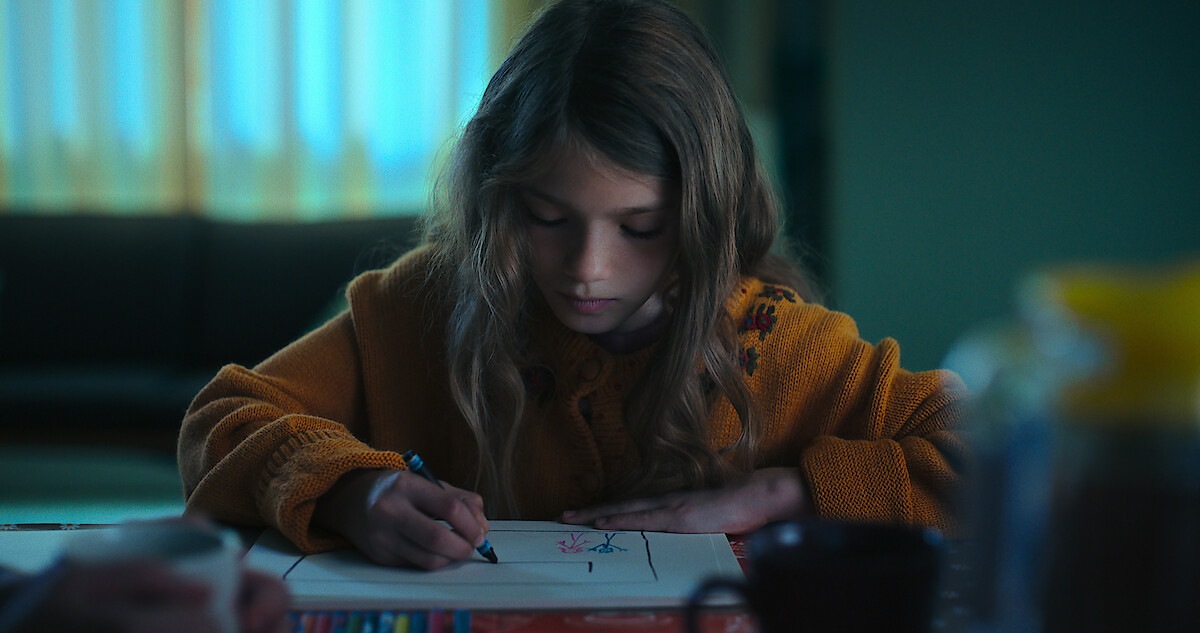In the German thriller series Dear Child, Jasmin Grass (Kim Riedle) is abducted from a parking garage and confined to a small, windowless apartment in a remote northern German forest. Her captor, whose face is never revealed, renames her “Lena” and dyes her hair blonde, forcing her to adhere to strict rules while caring for two children, Hannah (Naila Schuberth) and Jonathan (Sammy Schrein).
Over five months of captivity, Lena endures intense psychological and physical control, ultimately orchestrating a daring escape. Despite her temporary freedom, she soon realizes that eluding her abductor is far more difficult than she imagined, and the trauma continues to shadow her.
Dear Child is based on Romy Hausmann’s bestselling novel Liebes Kind, unfolding across six gripping episodes. The series delves into Jasmin’s dual identity as Lena and the complex relationships she forms under duress. As viewers follow the aftermath of a long-unsolved missing persons case spanning 13 years, the narrative gradually reveals the twisted dynamics between the captor, the children, and the victims. Through a mix of suspense, flashbacks, and psychological tension, the show explores themes of survival, identity, and the lasting consequences of trauma.

The Faceless Captor Lars Manipulates Victims, Revealing Horrific Control and Deadly Consequences
The series gradually uncovers the identity of the seemingly omniscient captor: Lars Rogner (Christian Beermann), the owner of a local surveillance and security company. Using his position, Lars manipulates both the physical and psychological environment around his victims, remaining undetected for over a decade while CID investigator Gerd Bühling (Hans Löw) searches for Lena. Aided by a flashback showing the real Lena Beck (Jeanne Goursaud) triggering an alarm at her family home, the series reveals Lars’ ability to maintain control through deception and surveillance, highlighting the chilling reality of someone hiding in plain sight.
It is revealed that the real Lena Beck had been pregnant with her ex-boyfriend’s child, Hannah, when Lars kidnapped her. Jonathan is the child of Lars and Lena, while a third child, Sara, dies along with Lena from postpartum complications when Lars refuses medical help. This pattern repeats with every “Lena” subjected to his captivity, illustrating a horrifying cycle of control and fatal negligence. These revelations add depth to the story, showing the abductor’s relentless and methodical domination over the lives of women and children, blending horror with tragic realism.
Jasmin Confronts Lars, Children Heal, and Trauma’s Ripple Effects Are Explored
In the series finale, Jasmin, struggling with PTSD, contemplates ending her life but ultimately chooses to confront Lars. The climactic scene unfolds by the seaside, where Jasmin uses a shard from Jonathan’s snow globe to fatally wound Lars, reclaiming her identity and declaring, “I’m Jasmin!” Meanwhile, the children are placed in care and therapy: Jonathan remains in a clinic for psychological trauma, and Hannah receives therapy while reconnecting with her family. Investigator Gerd begins to piece together the long-unsolved case, and Lena Beck’s remains, along with Sara’s, are finally reburied by her family, bringing a measure of closure.
Directors Isabel Kleefeld and Julian Pörksen took care to represent the children’s perspective through a specially adapted script for Hannah and Jonathan. This approach allowed the adult actors to interact with the children in ways that mirrored real-life experiences of trauma. Pörksen explained that all characters are, in some way, collateral damage of Lars’ crime, emphasizing that even perpetrators can be driven by exaggerated fears rather than innate psychopathy. The series combines suspenseful storytelling with psychological insight, portraying the ripple effects of violence on every individual involved.



